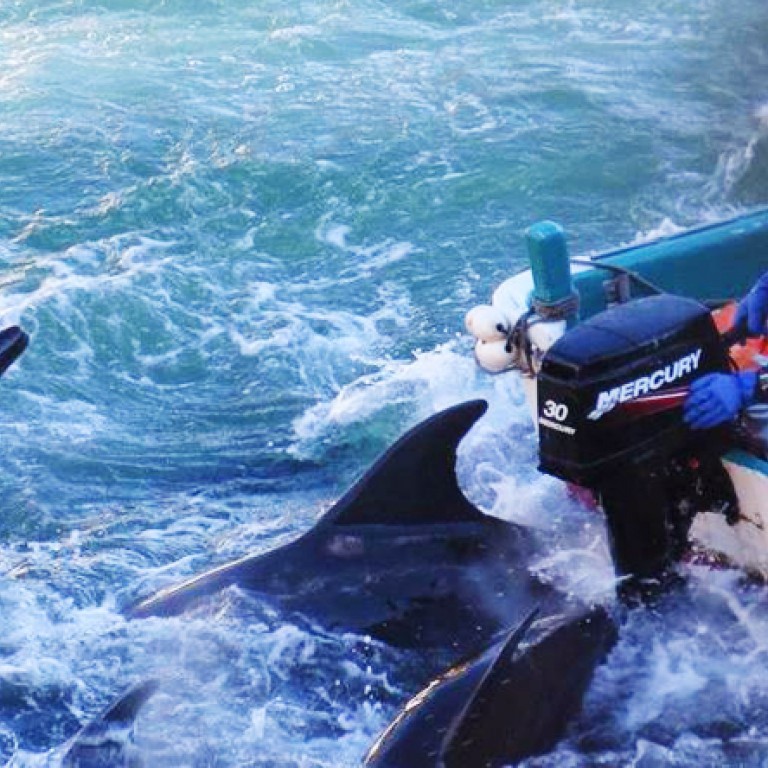
New | Hong Kong animal rights campaigners call for end to Japan's Taiji dolphin hunt
Multiple organisations in Hong Kong campaign actively against the practice and in August they delivered a letter signed by more than 4,000 city residents to the Japanese Consul General to Hong Kong Hitoshi Noda.

“This was the fourth year we have protested outside [the consulate],” said Zoe Ng, who helped organise the event. She expressed her frustration at the lack of response from Japan’s representatives to the city, and said that Noda refused to shake her hand.
In response to a request to comment for this article, the consulate said it "recognises the position of [dolphin campaigners] and has shared it with relevants offices in Japan."
“I know that some people are quite frustrated, every year we do the same thing, and it can feel like we’re not achieving anything,” Samuel Hung, chairman of the Hong Kong Dolphin Conservation Society, told the South China Morning Post. “I think it’s still good to achieve the pressure. We want to show our voice as somewhere that is close to Japan.”
Hong Kong has become something of a base for activists in Asia campaigning against keeping dolphins in captivity, which they say is the major driver behind the Taiji cull.
“This is not tradition,” said Suzette Ackerman, a Hong Kong based activist with the Dolphin Project. “The dolphin hunts only started in the late 1960s, the main thing driving it is the captive dolphin industry, this is the reason why the culling of dolphins happens.”
Ackerman said that fishermen can expect to make tens of thousands of dollars from selling dolphins to zoos and aquariums around the world.
“It’s all to do with the marine parks and aquariums, when people buy tickets they are actually fuelling this industry,” she added.

According to animal welfare groups, China is the largest export market for dolphins captured in Taiji. Activists have tracked captive dolphins to zoos and parks in Beijing, Shenzhen and Guangzhou.
Hong Kong’s Ocean Park, which only uses dolphins bred in captivity, could be a potential model for zoos on the mainland, Hung said. “We’re hoping the park can set a good example on this issue and that’s why we keep pushing them, hopefully eventually they can phase out dolphin shows and that may put a message out to other dolphinariums in China.”

“I think eventually China will catch on, because the flow of information from around the world, especially Hong Kong, will influence consumers there,” said Hung. “People in China are starting to become concerned about animal welfare and we’re hoping to capitalise on that.”
Hung is realistic about the uphill battle campaigners face however. “It’s going against a huge business that is very profitable, it’s like going against a goliath.”
